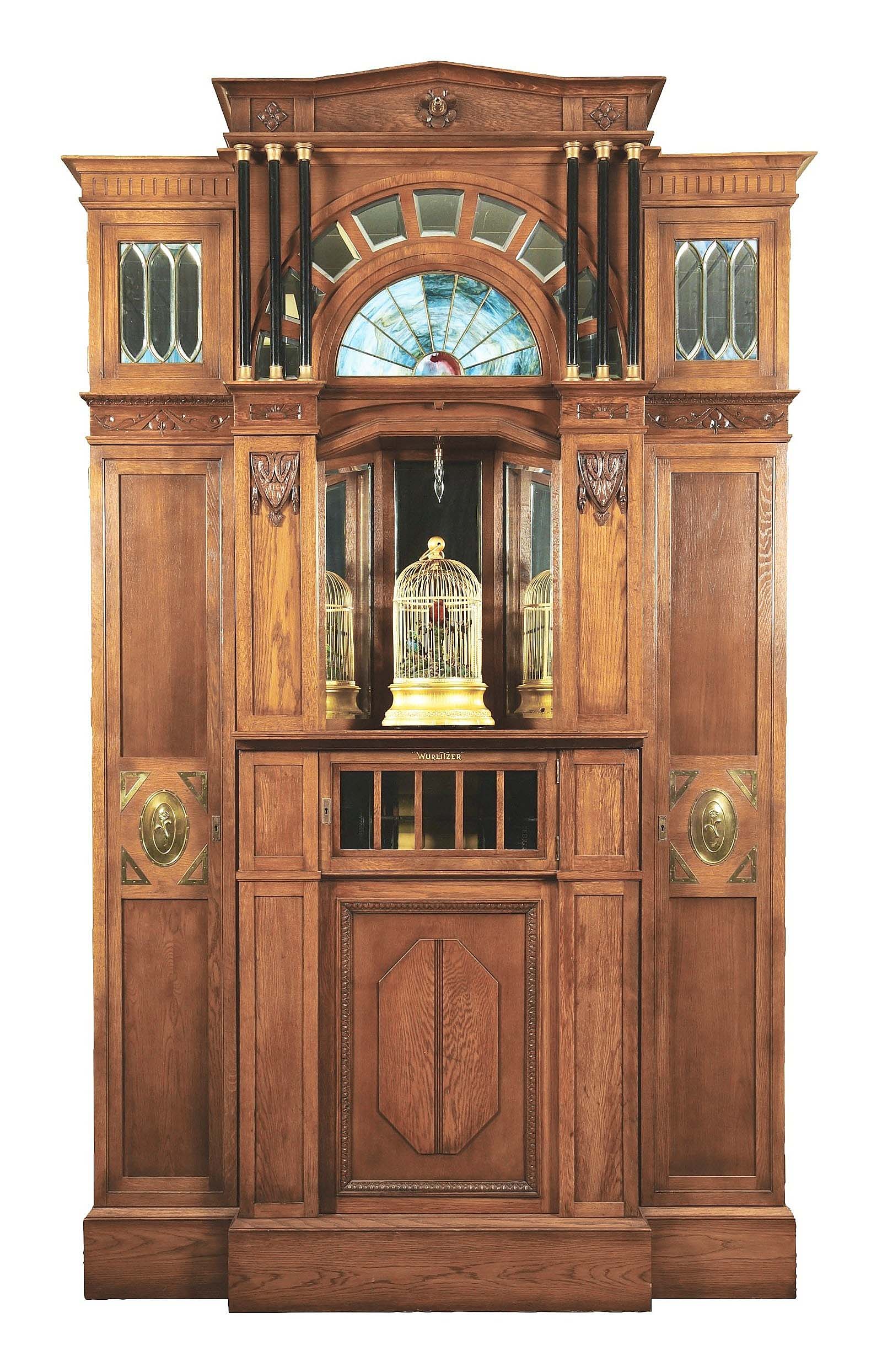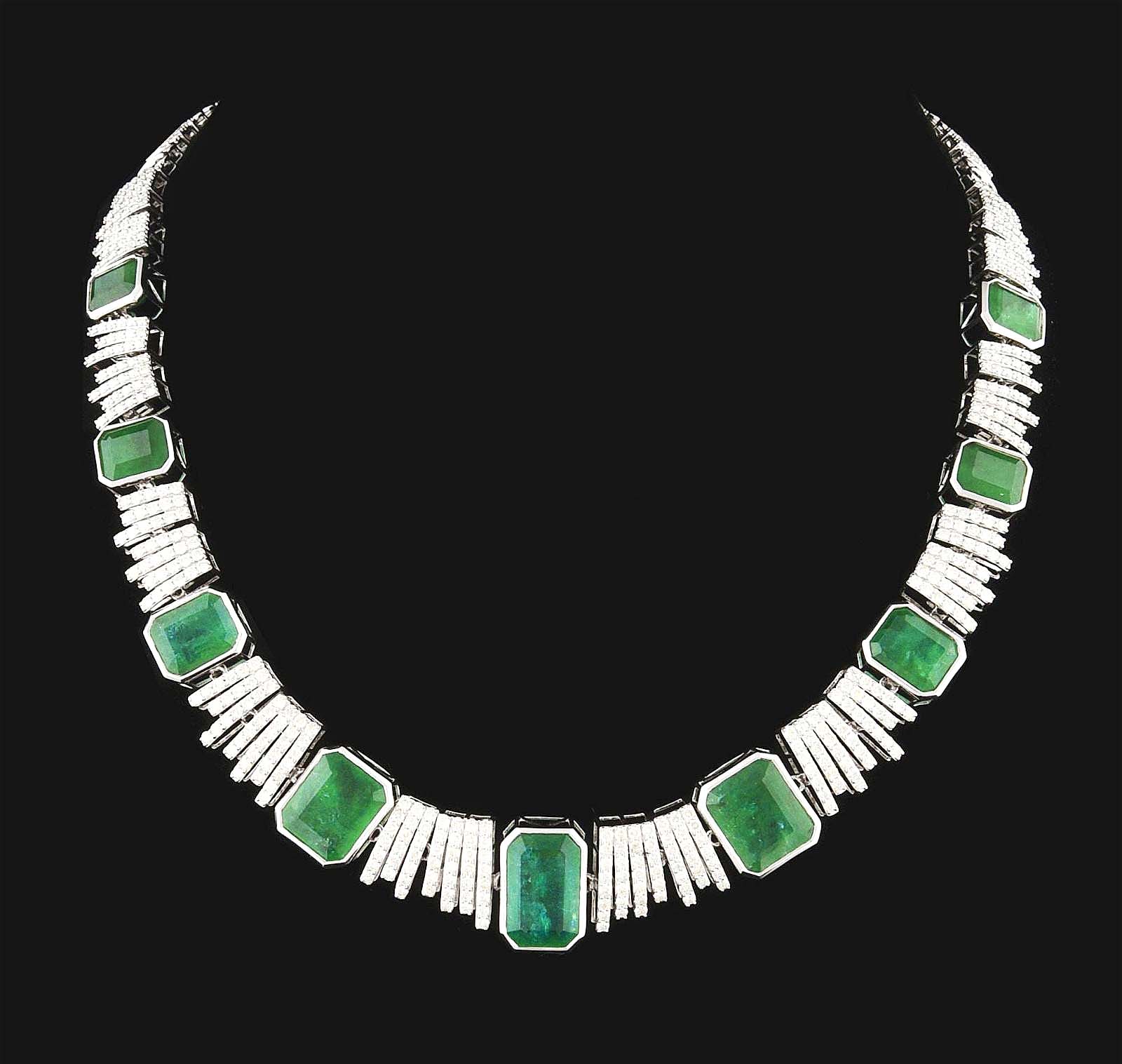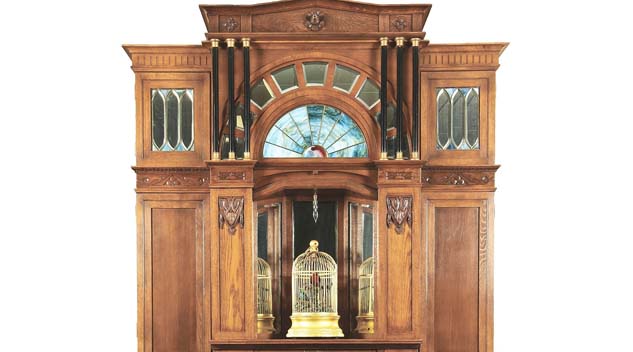#Glass #Lamps #Fine #Jewelry #Steal #Spotlight #Morphy #Auctions #Antiques #Arts #Weekly

Selling for the sale-high price of $110,700, this 1909 Wurlitzer Mandolin PianOrchestra style 33A, manufactured by J.D. Philips Co., Frankfurt, Germany, imported by The Randolph Wurlitzer Co., New York, could play 61 notes from several instrument features. It came with 56 music rolls and measured 128 inches tall by 74 inches wide and 46¼ inches deep ($75/150,000).
Review by Carly Timpson
DENVER, PENN. — Spanning two days, June 11 and 12, Morphy Auctions presented its Fine & Decorative Arts auction. The 1,050 lots in the sale included categories such as lamps, Americana, glass, pottery, jewelry, musical instruments, statues and general antiques. Eliza Fry, sales and marketing lead for Morphy, shared that the auction realized $1.53 million.
The highest price of the auction was $110,700 — achieved by two lots, one on each day of the sale. On the first day, a Tiffany Studios Peony table lamp claimed the top spot and on the second day, it was a Wurlitzer PianOrchestra. The circa 1910 Tiffany Studios Peony lamp’s 22-inch shade was designed with red and white flowers against a multicolored mosaic of confetti and mottled glass in various shades of blue and green. The shade sat atop a rare height-adjustable six-socket Bamboo table base with its original matching heat cap, which had provenance to Sotheby’s. The lamp shade had provenance to the notable art glass and Tiffany collection of Minna Rosenblatt, whose obituary was in an August 2008 issue of this publication.
Tying for the same achievement was a circa 1909 Wurlitzer PianOrchestra style 33A, which was manufactured by the J.D. Philips Co., of Frankfurt, Germany, and imported by The Rudolph Wurlitzer Co., New York. A 20-inch-tall mechanical bird cage was displayed on a shelf at the center of the wooden case which was adorned with metal, mirror and stained glass accents. Inside, the self-playing orchestra machine contained the mechanical workings of several instruments, including a piano with mandolin attachment, 49 violin pipes, 30 violincello pipes, 30 piccolo pipes, xylophone, bass and snare drums, kettle drums and cymbals, triangle and tambourine, castanets and chimes. The model had an auto-roll changer, and it was sold with 56 Wurlitzer rolls manufactured by Play-Rite Music Rolls, Inc. Some of the included tunes were identified with their titles and original performers and helpfully labeled as a “Fox Trot,” “Waltz,” “Two-Step” or “Rag.”

This circa 1906 Cactus vase by Paul Dachsel (Czech, b circa 1880) was in mint condition and measured 22 by 9 inches; bidders took it past its estimate to $34,440 ($18/24,000).
Thirty-five pieces of early Amphora pottery were included in the sale, but just one crossed the block for a price high enough to land it within the top 20 lots overall. Bidders took a circa 1960 Cactus vase by Paul Dachsel, considered one of the maker’s most innovative works, to $34,440. The iridized matte green glazed vase had two undulating handles tapering from a wide connection at the bottom of the vase to thin points that connect near the top. An example of this rare piece was illustrated in Ceramics from the House of Amphora 1890-1915 (Richard L. Scott, Sidney, Ohio, 2004) and, as Morphy’s pre-sale press release said, its “streamlined form seems to foretell the Moderne aesthetic that would not arrive on the art scene for another quarter of a century.”
Handel reverse-painted lamps were popular, with a Riverbed lamp on a bronze Mermaid base achieving $33,825. The 18-inch-wide shade — painted with yellows, oranges, greens and browns — depicted an autumnal scene of a rocky riverbed in a wooded forest. The figural table base depicted a mermaid rising from a wave holding a scallop shell. The column, which extended from the shell, was topped with three sockets and a heat cap. A similar Mermaid base, this one with a triton finial heat cap making it a few inches taller, was paired with a sea-green Aquarium shade. The iconic Handel lamp was painted with purple coral and yellow fish and various underwater vegetation visible in the foreground. When lit, the design gives the illusion of sunlight reflecting into the water from above. It swam above its estimates to earn $28,290.

This Tiffany Studios 15-inch Spider and Web table lamp on bronze Inverted Mushroom base, 18 inches high, made $33,210 ($30/40,000).
Tiffany Studios lamps that found success, in addition to the top-earning Peony, included a Spider and Web table lamp on an Inverted Mushroom base. The mottled yellow scalloped geometric web design of this shade was accented with raised veins spreading from the top with its “legs” extending down the sides of the shade. The reddish brown patinated bronze base had three sockets and an appropriately paired heat cap. The Spider and Web shade and Inverted Mushroom base pairing are illustrated in Alastair Duncan’s 1988 Tiffany Lamps and Metalware as well as The Lamps of Tiffany by Egon Neustadt (1970). In excellent condition with no losses and only a few hairline cracks, bidders took the lamp to $32,400.
Alternately identified as Geometric or Plain Squares, a 20-inch shade with amber-yellow rectangular leaded glass tiles was cataloged as “finished in gold,” though that finish had faded substantially. Completing the golden look, the shade was paired with a four-socket bronze Stick base that had been finished in acid-etched gold. Together, this Tiffany Studios table lamp was sold for $17,220.
With the iconic deep green iridescent Tiffany Studios turtleback tiles in a band around a yellowish-green geometric base, a Turtleback table lamp on a three-socket Double Scroll base was bid to $15,990 and a six-socket Junior Piano Floor Base, with no paired shade, was bid to $20,910.

Bringing $15,990 was this Tiffany Studios Turtleback shade on a three-socket Double Scroll bronze base, 22 by 16 inches ($15/20,000).
Two leaded glass lamps by Duffner & Kimberly made their marks on bidders as well. With similar motifs as the top Tiffany lamp in the sale, one of these was a Peony table lamp. Cataloged as “beautiful and incredibly rare,” bidders were taken by the Duffner & Kimberly example and brought it to finish, within estimate, for $24,600. At 24 inches wide, this lamp shade featured red peonies against green leaves and a vibrant yellow background. Notably, several of the red “petals” were made with drapery glass, adding to the richness and complexity of the shade’s artistry.
Making $14,760 was an Egyptian table lamp on matching Egyptian base. This leaded glass Egyptian shade was a very rare model for Duffner & Kimberly with very few known models. Each side of the mosaic included a face above an Egyptian winged sun motif. The shade’s multicolored glass included complex purples and blues as well as reds, yellows, greens and oranges and was further accented by intricate painted details. The square pedestal of the bronze base had repeating winged sun motifs and seated figures and came with a matching heat cap.
In addition to decorative arts, the jewelry category was particularly strong. Bidders took interest in an 18K yellow gold, emerald and diamond bracelet by Oscar Friedman. Each of the bracelet’s 10 octagonal step-cut emeralds was separated by two rosettes made of round brilliant-cut diamonds. In total, there were 154 diamonds and the bracelet weighed 39½ grams. Paired with an appraisal report from GAA, it was taken past its $15,000 high estimate to finish at $23,370.

An 18K white gold, emerald and diamond necklace by Oscar Friedman, 17½ inches long, with GGA appraisal report, was in “excellent unworn condition” and brought $22,140 ($20/40,000).
A necklace by Oscar Friedman — 18K white gold with nine graduated emerald cut emeralds and 640 round brilliant cut diamonds — brought $22,140. It was cataloged as being in “excellent unworn condition” and was also sold with a GAA report. Nearly 500 round brilliant cut diamonds accented the pear-shaped Burmese rubies that made up another Oscar Friedman necklace. The 62 rubies totaled more than 29½ carats and, like the other, it was in “excellent unworn condition.” It exceeded its $16,000 high estimate to earn $20,910.
A tennis or line bracelet made with 14 carats of emerald-cut diamonds set in platinum found a buyer for $17,220 and a wide 18K white gold and ornate diamond bracelet — with more than 1,350 round brilliant cut diamonds graded H/I for color and VS in clarity — brought $15,990.
Prices quoted include the buyer’s premium as reported by the auction house. Morphy Auctions’ next sale will be Automobilia & Petroliana on July 11. For more information, www.morphyauctions.com or 877-968-8880.




